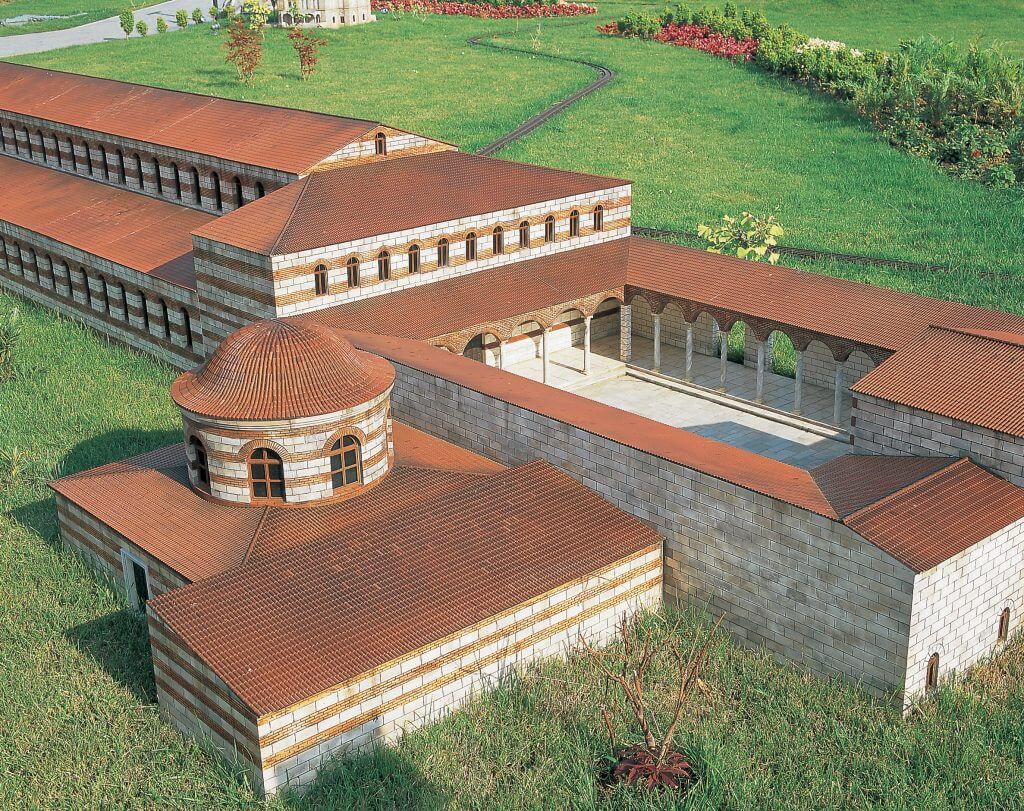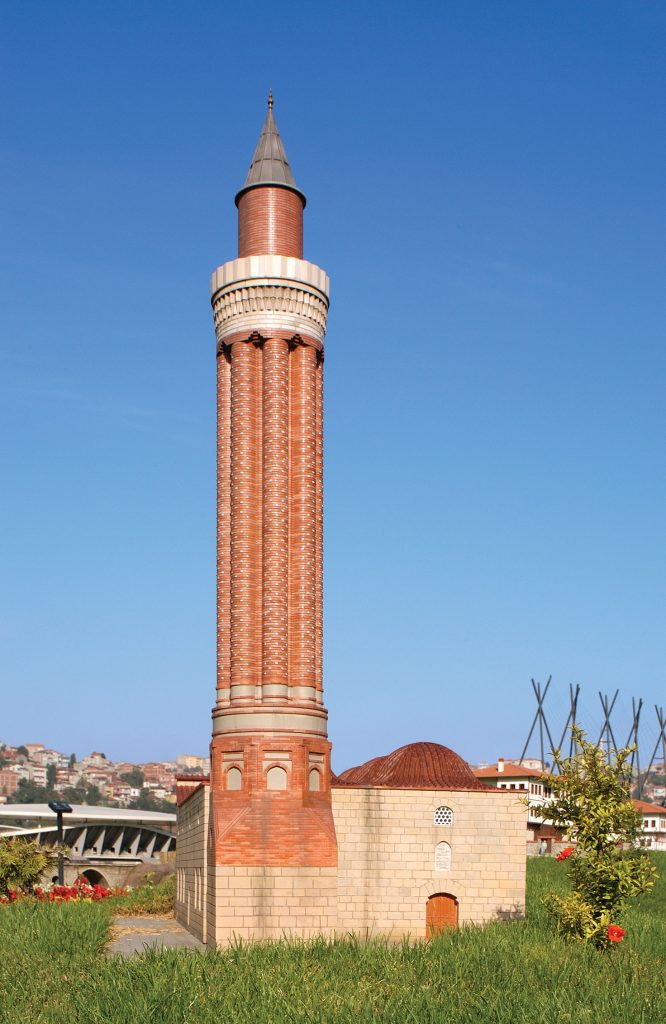-
Welcome to Miniaturk
- iletisim@kultur.istanbul
- +90 212 222 28 82
Welcome to Miniaturk

The history of the work in İzmir goes back to the Roman period. The building, which was built as a vegetable market in the Ancient Ages, has been transformed into a church after the spread of Christianity. The church was used as a meeting venue for the council in the 5th century. Only the apsis section survived until today.

It was built by Ottoman Sultan Murat the 3rd between 1583 and 1586 in Manisa, the town of princes. The mosque is made of cut stone and the entrance gate is considered to be a masterpiece of wood carving

Alaeddin Mosque, one of the early Seljuk works, is located in Konya. The construction started in 1155 and it was named Alaeddin Mosque after its completion in 1200 by Seljuk Sultan Alaeddin Keykubad 1st. It is the work of the Architect Muhammad bin Havlam from Damascus. It is the oldest example of multi-columned mosque in the old Arab style in Anatolia.

It was built between 1260 and 1264 in Konya by the Seljuk Grand Vizier Sahip Ata. It is written at the crown gate that the architect is Abdullah Oğlu Keluk. It is famous for its minarets and inlaid stone gate decorated with tiles. The minaret, which was destroyed by a lightning in 1901, is exhibited in Miniatürk with the form that it will take after the restoration.

It is believed that the Madrasa in Erzurum was made by Hüdavend Hande Hatun, the daughter of the Seljuk Sultan Alaeddin Keykubad the 1st between the years 1270-1291. It was repaired by Murad the 4th and was converted to cannon foundry. The building, which was used as a foundry until 1846, was later converted to a madrasa again and used as a madrasa until the foundation of The Republic of Türkiye. The Twin Minaret Madrasa was put into service as a museum in 1942.

The architectural work that was completed in 1274, is in Konya. The dome decorated with turquoise tiles is one of the most beautiful works of the Seljuk period. This well-known dome was built by Architect Bedreddin Tebrizi. Semahane and the large domed mosque were built by Sultan Süleyman the Magnificent. The tomb was opened in 1927 under the name of “Konya Asar-ı Atika Museum”.

Its architect is Professor Clemens Holzmeister from Austria. Its foundation was laid on October 26th, 1939 and it was opened on January 6th, 1961. The Parliament building’s architectural features and general structure symbolize the Republic of Türkiye’s power and immortality in the form of icons with rugged and durable qualities.

It was built by the ruler of the period, Hasan Pasha’s son Ishak Pasha in 1784. The palace covers an area of 7600 square meters near Dogubeyazit. While the structure conforms to the scheme of the Ottoman palaces, the crown doors carry the traces of the Seljuk architecture. On the crown doors, the workmanship of different cultures from Iran to the Anatolian Seljuks, Georgia and Caucasia were used together.

The Ziraat Bank building built by the Italian architect Giulio Mongeri between 1926 and 1929, is a major work of the First National Architecture Period. One of the Türkiye’s oldest banks, the Ziraat Bank building was converted into a museum on November 20th, 1981 after being used as the headquarters.

It was built in the name of the great Sufi and poet Hacı Bayram Veli. The mosque in Ankara was built in 1427 and the tomb was built in 1429. The first renovation was done by Architect Sinan in the 16th century. Renovated again in 1947, the tomb has 8 sarcophagus.

This temple was built by Roman Imperial Augustos on the sacred area of Kybele and Men in 25-20 BC. The temple is near the Hacı Bayram Mosque. It is also known as the Ankara Monument in the world. The marble temple of 36 x 54.82 meters stands on 2 meters high multi-step podium. The temple was used as a church in the Byzantines period.

Located in Kaleici, Antalya, the yivli minaret mosque was built in 1230 by Sultan Alaaddin Keykubat the 1st. 8 semicircles rise on top of a square forming a cylinder-shape. On the eastern gate of the mosque, it states that the building was built on the area of a Byzantine Church. The complex is composed of a madrasah, the mevlvi lodge, two tombs and the Great Mosque.